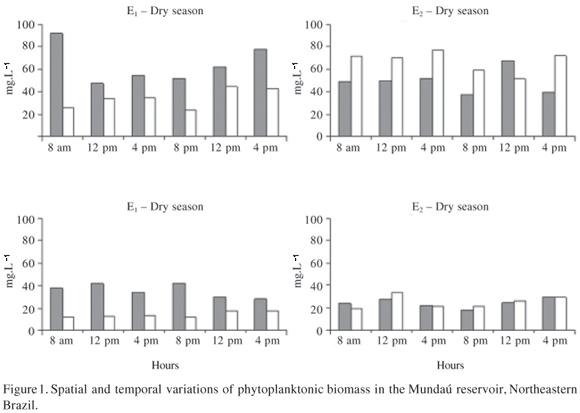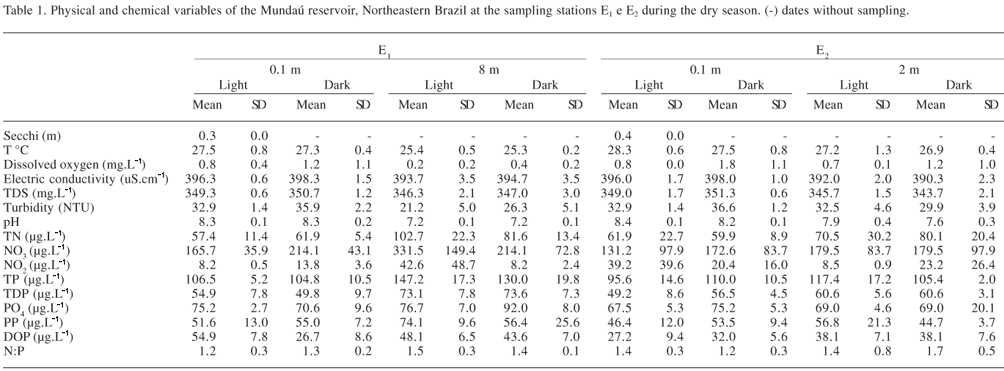The aim of this study was to determine how abiotic factors drive the phytoplankton community in a water supply reservoir within short sampling intervals. Samples were collected at the subsurface (0.1 m) and bottom of limnetic (8 m) and littoral (2 m) zones in both the dry and rainy seasons. The following abiotic variables were analyzed: water temperature, dissolved oxygen, electrical conductivity, total dissolved solids, turbidity, pH, total nitrogen, nitrite, nitrate, total phosphorus, total dissolved phosphorus and orthophosphate. Phytoplankton biomass was determined from biovolume values. The role abiotic variables play in the dynamics of phytoplankton species was determined by means of Canonical Correspondence Analysis. Algae biomass ranged from 1.17×10(4) to 9.21×10(4) µg.L-1; cyanobacteria had biomass values ranging from 1.07×10(4) to 8.21×10(4) µg.L-1. High availability of phosphorous, nitrogen limitation, alkaline pH and thermal stability all favored cyanobacteria blooms, particularly during the dry season. Temperature, pH, total phosphorous and turbidity were key factors in characterizing the phytoplankton community between sampling times and stations. Of the species studied, Cylindrospermopsis raciborskii populations were dominant in the phytoplankton in both the dry and rainy seasons. We conclude that the phytoplankton was strongly influenced by abiotic variables, particularly in relation to seasonal distribution patterns.
Cylindrospermopsis raciborskii; eutrophication; nutrients; water supply reservoir








